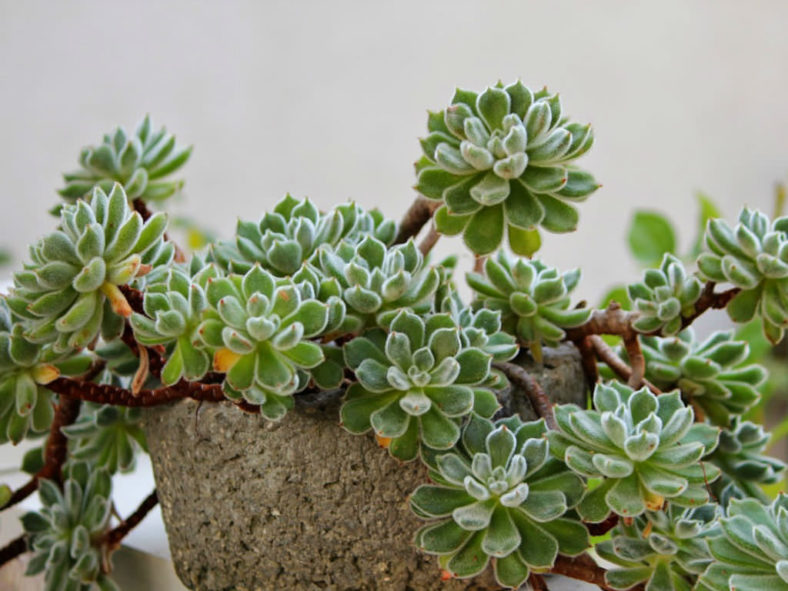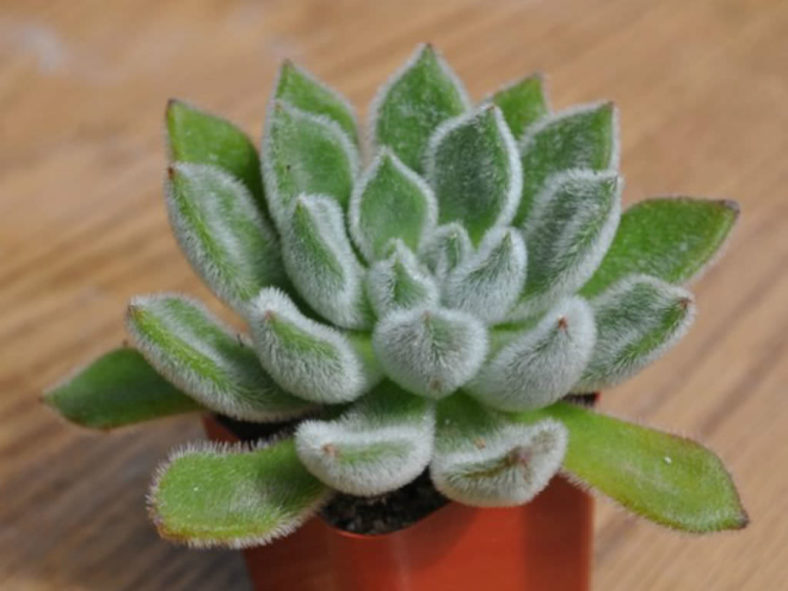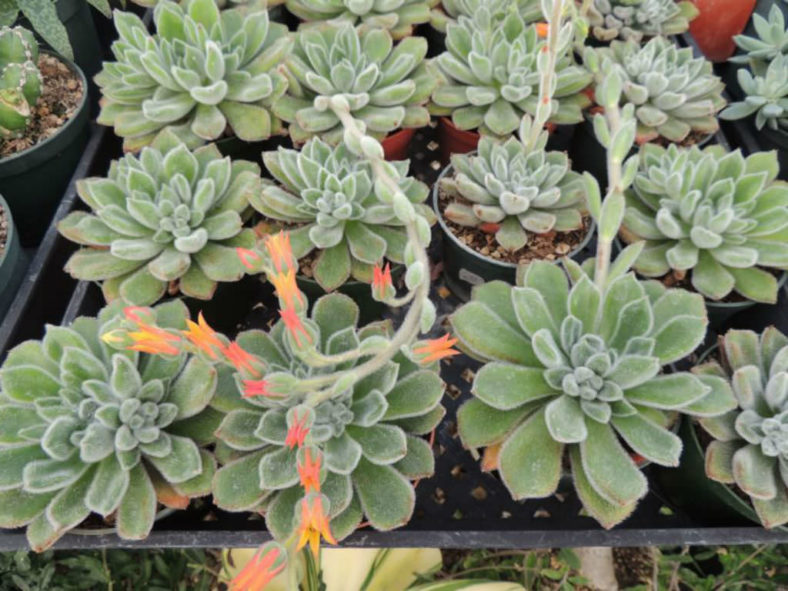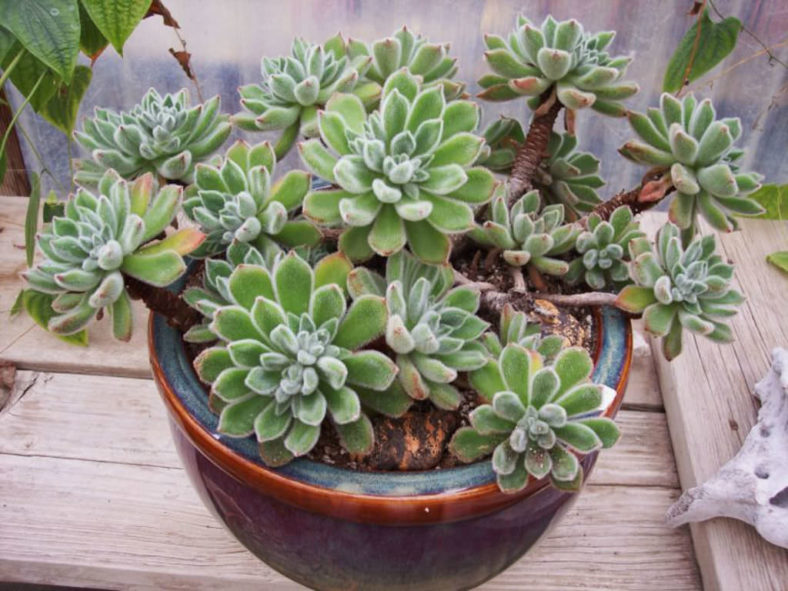Scientific Name
Echeveria 'Doris Taylor'
Common Name(s)
Woolly Rose
Scientific Classification
Family: Crassulaceae
Subfamily: Sempervivoideae
Tribe: Sedeae
Genus: Echeveria
Origin
Echeveria 'Doris Taylor' is a hybrid created in 1932 by Dr. W. Taylor and named after his wife. It results from a cross between Echeveria pulvinata 'Ruby' and Echeveria setosa.
Description
Echeveria 'Doris Taylor' is a beautiful small succulent with short stems and rosettes of spoon-shaped, pale green leaves with small red tips in bright sun. It can grow up to 5 inches (12.5 cm) tall and readily produces offsets, forming large, well-formed clumps over time. Its rosettes are more open than those of Echeveria setosa. The entire plant, including flowers, is covered with glistening hairs, similar to Echeveria setosa but more numerous. The leaves are thick and fleshy, measuring up to 3.6 inches (9 cm) long and 1.2 inches (3 cm) wide.
The flowers are yellow on the inside, red, shading to yellow on the outside, and appear in clusters on leafy stalks from spring to fall.

Form of Echeveria 'Doris Taylor'
How to Grow and Care for Echeveria 'Doris Taylor'
Hardiness: USDA hardiness zones 9a to 11b: from 25°F (-3.9°C) to 50°F (10°C).
Place Echeveria where it will receive full morning sun or partially shaded afternoon sunlight. Place it on the balcony or porch during warm, sunny weather if it is in a pot. Give the Echeveria at least a foot (30 cm) of space on each side to prevent it from being crowded by other plants.
Water whenever the soil feels dry during the growing season. Water lightly until the soil is moist but not very wet. Echeveria can go for extended periods without water once established, but they grow better and faster when watered regularly during the growing season. Reduce watering during the winter, allowing the soil to dry thoroughly between waterings.
Fertilize Echeveria with liquid 2-7-7 succulent fertilizer during the growing season, from spring to late summer. Add seven drops of fertilizer to one quart of water, then sprinkle the solution around the base of the plant. Fertilize once every two weeks.
Echeveria will drop many of its lower leaves during the winter. Remove shriveled and fallen leaves as they accumulate around the base of the plant. Discard the leaves before they begin to rot. Decaying leaves can spread the disease to the rest of the plant if not removed.
Learn more at How to Grow and Care for Echeveria.
Links
- Back to genus Echeveria
- Succupedia: Browse succulents by Scientific Name, Common Name, Genus, Family, USDA Hardiness Zone, Origin, or cacti by Genus
Photo Gallery
Click on a photo to see a larger version.


